HERE'S A MARVEL & A TALE... This autumn, in the rather marvellous Journal of Fairy Tale Studies published by Wayne State University Press, Marvels & Tales, are three drawings of mine, and a few words too.
Illustrations aren't usually published in the journal, I was told, apart from the occasional turn of the century fairy tale painting. So in a new departure for the journal, they've included my drawings in a Texts & Translations section, for fairy tale responses and interpretations.
Here published below are the three drawings of a favourite fairy tale archetype of mine - The Old Woman In The Woods - and my accompanying article. The drawings were made over a year ago in charcoal and pencil.
But I do urge you to investigate the paper version, which arrived in the post this week. It is published biannually, and is full this autumn with academic musings on giants trampling the earth, stepmothers and narrative disobedience in Pan's Labyrinth, amongst a great deal else...
Also, do tell me if you would buy prints of these drawings, and I'll rustle some up!
{EDIT : Prints for sale in the shop now! Large and small, roll up, roll up! }
{EDIT : Prints for sale in the shop now! Large and small, roll up, roll up! }
________________________________
DRAWING THE OLD WOMAN IN THE WOODS
That old woman. She is sometimes frightening, sometimes kind, always ancient, always cunning, and she always dwells deep in the woods where children become lost.
She who lives in a little house in the forest is a tale-character you'll have met often. Her stories are rich and dark, and hopefully quite terrifying.
This old crone has been a long fascination of mine. My years of loving folktales have repeatedly brought me back to her. I imagine myself as her one day, if not now (though I am young still).
These three drawings are three hag-grandmothers, three ancient crones of fairytale, three faces of the same old woman. Here I have drawn her as Baba Yaga, Red Riding Hood's Grandmother, and Hansel and Gretel's Witch. These are three well recognised guises of the old lady, and my drawings are portraits of each crone with her forest dwelling, because as I see it the place where this old woman lives is a vital key to understanding what she represents.
She appears as an incarnation of the crone or winter aspect of the female deities of old. She is the carrier of wisdom, the guardian of the life and death gates, the overseer of the cold months, and the stewardess of story.
We talk nowadays of long, old, particularly northern, tales as Sagas. But in some quarters it is believed that this word saga was once the feminine of the word sage and that the written sagas of Scandinavia were originally sacred histories kept by female sagas or ‘sayers'. Thus storytelling and wisdom-keeping were entwined in one person: 'She who Speaks' ~ the Oracular Priestess. Her appearance in orally passed down fairy tales seems to stress the importance of story for gaining and nurturing wisdom.
This old lady has many many incarnations in every culture and tradition, but I would like to focus particularly upon the northern snowy countries whose folklores have always drawn me.
The wild forest is a vital aspect of the tale. The tangled thicket is to me a direct representation of wilderness, of the wild nature in us all. It is the feared unknown, the darkness, the habitation of creatures strange and terrifying and of 'otherness'. It is where we must go as lost children to face adversity and death and there find wisdom and rebirth. I wonder whether folktales that feature an old woman in a little hut in the woods are more prevalent in Nordic, Slavonic and Teutonic myth. These are the places where vast particularly conifer and birch forests grow. And on these forest floors grows something else, something powerful and sacred that will show us the way into the gingerbread house...
The Fly Agaric Mushroom (Amanita Muscaria), that little white-spotted red-cap growing deep in the forest that appears so very often in fairy tale illustrations is a mushroom long revered by northern Shamans as a gateway to the Other World. Its hallucinogenic properties could take you to realms of deep knowing, beyond the everyday. I would like to here make the connection between this striking red and white fungus and the 'little hut' in the forest that belongs to that old woman. Both are found deep on the dark woodland floor, both are alike in shape, both take you to the other world. In some tales (such as Hansel and Gretel) children are tempted to directly eat of the house. In others, the journey to find the old lady's dwelling, losing oneself in the forest along the way and facing the terrors within the 'hut' could all be symbolic of the shamanic initiation process one would go through as a result of ingesting the Fly Agaric mushroom. To enter iron-toothed Baba Yaga's skull-lined chicken-legged house, or to approach the devouring wolf inside the hut of Red Riding Hood's grandmother are perhaps to face, whilst in Fly Agaric reverie, the fact of one's own death and other dark truths of nature.
In these tales, children often become lost and unable to return home. This could symbolise the initiatory process of leaving the secure nest and stepping out into the wilderness. And once inside the hut, the tales' protagonists must face adversity of one kind or another. Either they overcome the 'witch' through cunning, or are swallowed and reborn from the belly of the wolf, or they prove themselves bold and true enough to look into the eyes of the skull-lantern.
There are many folkloric 'wood-wife' characters within northern traditions. They are usually wild, hairy or mossy forest-dwelling creatures who are glimpsed on occasion by wanderers into the woods. In Scandinavia, the Huldra is an aged woman, lovely in front but hideous and hollow like a tree behind. Her name comes from a Norwegian root word meaning 'covered' or 'secret', suggesting that she holds keys to hidden gateways. Bavaria's wood-wife, the Dirne-Weible walks about dressed in a red frock carrying a basket of red apples and asking people to accompany her. I wonder whether references to red apples, or indeed red caps and riding hoods in fairy tales, could be a direct hint at the red-hatted mushrooms. Little huts too, it seems to me, have something of the mushroom about them. And therefore tales of journeying to them might hint at the wild wisdom that can be found deep in the forest if you are brave enough to wander away from the path, brave enough to accompany the mossy wood-wife, brave enough to enter the old women's houses where teeth and decay and incinerating ovens are to be found, but also keys to stories and rebirth, in the ancient tradition of the wild.
I hope that in my drawings I have managed to convey the look in the eye of the old ladies of folktale as they pass on to you the story-reins and in so doing invite you into their forest houses of wild knowing.
________________________________
Marvels & Tales is a peer-reviewed journal that is international and multidisciplinary in orientation. The journal publishes scholarly work dealing with the fairy tale in any of its diverse manifestations and contexts. Marvels & Tales provides a central forum for fairy-tale studies by scholars of psychology, gender studies, children's literature, social and cultural history, anthropology, film studies, ethnic studies, art and music history, and others.
This is a pre-copyedited version of an article accepted for publication in Marvels & Tales, volume 24, issue 2, 2010 following peer review. The definitive publisher-authenticated version is available from Wayne State University Press.




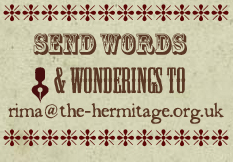

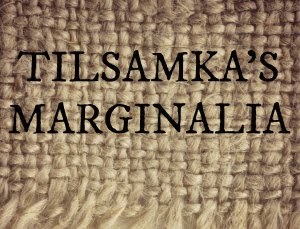

























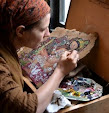

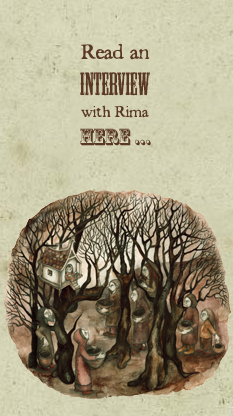

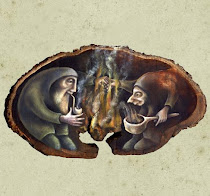
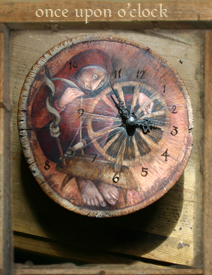


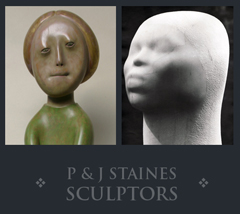




















45 comments:
These drawings are quite wonderful.... scary in ways I can't quite explain. The idea of a woman as predator is quite frightening to me.
I like the drawings. I have always been intrigued with fairy tales as scary lessons to children.
You know that I would be interested in prints of these if you sell them. You have an "edge" that I appreciate.
Hi beautiful lady,I love your work and Im sharing your post on my Facebook profile cause I think there are more of the sweet souls who would love to be introduced in the beauty of your work! Have a nice evening!
Aleksandra
Wonderful, thank you!Posting a link if I may.
Marvellous !! Love them all but especially the last. Having once been described as "eighteen-going-on-eighty" I have always felt some affinity with crones myself .I think your drawings here, and that wonderful clock you once made, show you have more than a nodding acquaintance :0) xx
Hi there Rima you know how I like to sit quietly in the corner when I visit; today is no exception as I cross my big toes in the hope that one of these characterful crones doesn't spot me lurking in the shadows.
Smiles*!*
Well done ...but I'm not surprised!
Rima, it's hard to express how much I loved the facial expression of the three ladies, their eyes look innocent and at the same time biting.
I thought Baba Yaga's drawing will be a watercolour but in b/w it looks beautiful indeed.
It will be great you continue drawing your own version of known fairytales, especially Grimm's.
Good luck!
x
Thanks Rima, that was fascinating :)I think I'm going to have to go order myself a copy of 'Marvels and Tales'...
Wonderful stuff...I've been thinking about this old woman too of late. She is the scariest of the three faces of the divine feminine so did not get invited to the ball (or the princess' christening), so to speak, and wasn't assimilated into Christianity as the Maiden and Mother aspects were. So she remains terrifying and unknowable. But she's always there, even now, as much as we might try to pretend she has disappeared!
Rima, it always makes me happy to read your blog. You could talk about a dustmote and it would still be fabulous. Shining star you are. Your blog is one of the things I am thankful for as we celebrate Thanksgiving Day in the states.
Rima, amazing work...scary and magical and dark and secret...all the good stuff (: Wayne State is just around the corner here, in fact one of the professors from Wayne State University is having Thanksgiving Dinner w/us tomorrow! Small world. I shall order a copy right away! Beautiful work!!!~Amy
Their expressions are marvelous and invite me as well as scare and awe. I'm so glad that they published your pictures and article together. It makes me think of all of the best art and writing...have you heard of Angela Carter's writing? she delves into fairy telling and the magical and gender...
Ohhhh me ohhhhh my.
Those are quite something.
I would be inspired to buy prints of those, most certainly.
Love the post as well.
Thank you, as always.
Rima! I want prints of all three of these magical crones, smallish size so I can put them all in one long frame. What do you think? Email me when you have a chance.
Rima, Your drawings and paintings are so magical. I haven't seen a single one that I didn't like. I definately think you should market the drawings.
Cenya
I love your illustrations and your interpretations of these characters and tales. Your blog is a joy to visit!
I find the Scandinavian references interesting. Growing up, my Norwegian grandfather once sat in the ocean nearly completely covered in seaweed - playing the part of a troll. Another time, way up north in the mountains (where the birches grow and moss covers everything) he pointed out tree stumps with long warty noses and bowed shoulders. Indeed, we grew up seeing trolls and old crones lurking in the mists and forests.
What an inspiring and enchanting writing, and the drawings are just perfect. Thank you for sharing this!
Thank you for the insightful article. I was just going through my fairy tale books thinking of donating some of them, fairytale books make up the majority of my books these days, I think I will reconsider and look for sagas and other old women in them and think of your beautiful drawings.
Really nice drawings and I love the article as well. I've made sure that Baba Yaga came in for her bows in "Lon'Aite" but then, honestly, she knew she'd have to be there and appeared when she needed to be...when I was lost in the telling and wasn't sure where it needed to go.
I want to be the old-woman-in-the-cottage when I grow up!
For some reason (that I can't explain to myself) I think I loved the Baba Yaga drawing the most. I want to go into her chicken-legged house but it doesn't feel like a safe move: which is how all crones should make you feel.
All of it really wonderful - how do I get hold of a paper copy of the journal?
They're wonderful drawings Rima, so full of feeling and so very 'believable'. It's as though they really do exist somewhere. They live in the imagination but by your magical hand you've brought them into the light of the real day. Fantastic! xx
I love this notion of saga as female for sage, that's going to keep me musing.
Have you read Sara Maitland's short stories? I think you would relish her retelling of some of our ancient tales.
Thank you friends as ever for loving these words and drawings!
I'm just poking my hooked warty nose round the corner to tell you that I've listed the drawings in my shop just now...
http://thehermitage.etsy.com
And to answer Tonia's question about where exactly one can get hold of a paper copy of the Journal - here's the way:
http://wsupress.wayne.edu/journals/marvels/marvelsb.html
:)
I lament the loss of the forests that once covered much of England . . .
Fascinating premise about the origin of the word 'saga'.
Thank you for this enlightening piece,Rima.
Alan
You are so very talented!
We too have Northern links, my husband is half Finnish. The woods around his grandparent's house are full of wonders; real ones like the Elk and calves met on the way for our morning swim in the lake. Or the more ethereal ones, like the paths that dwindle and disappear, leaving you to turn and retrace your steps as the forest shuts you out of it's secrets.
I enjoyed your article very much and have always liked the crone aspect the best.
with thanks, Charlotte
As usual, woderful drawings and writing! In Poland we know Baba Yagas very well. And, as I remember from my childhood, they were always slim - which made them more dreadful. Yours look much more symphatetic - don't get me wrong, I love them :)
And I like your idea of connecting the acid mushrooms with red elements in tales. Now I know where the dwarfs come from!
Hey Rima,
Baba Yaga has long been a favourite lady of mine, and an aspiration.
I think another layer of meaning to all the red things in folklore (there's lots of red shoes too) is the menarche, which fits with rites of passage and children becoming lost, never to return, or not as they were... just a thinking from me.
And congratulations for getting scholarly recognition - deserved, indeed.
Love
x
Dear Rima:
What a lovely post! I do enjoy your imagery and narratives so very much! Fairy tales and folk narratives play such important roles in conveying lessons. Your description of the "crone" is spot on!
Being, like every other Southern American woman, utterly obsessed with Gone With the Wind, I would FLIP to see your inked rendering of the crone-in-the-woods character from the novel SCARLETT. Just sayin'. :)
congratulations, what an accolade!
I have told "Once upon a time" but of course he had already heard your good news.
rima you see the world as I do
as a world of symbols - in everything a message.You notice the hidden order to quote the wonderful robert moss.
Hi sweetheart, just catching up on what you have been up to! Fantastic work as always!
Sorry to read about the unfortunate and frankly extraordinary reaction of one of your customers. Will email...big hug X
Rima, these drawings are stunning!
My absolute favourite fairytale character. As a child I particularly loved a tale, the name of which I now cannot recall, about a little girl who gets lost in the woods and is held hostage by a witch who makes her sweep all day long so that she knows where the girl is at all times. She escapes when the witches cat takes pity on her and takes over the sweeping long enough for her to make her escape. I was obsessed with this story as a small girl, and had reoccurring dreams of it in my teens!
Congratulations on your drawings making this publication! And I am not surprised at all that they should!
Cx
Rima, thank you for your beautiful contribution as well as for the introduction to this fantastic journal! I will certainly consider subscribing as I have a long-standing obsession with fairy tales (particularly Northern European ones) as well.
It looks wonderful! Congratulations!
I love your art and I follow your blog :)
http://www.diramazioni.it/vocisconnesse
http://www.etsy.com/shop/Vocisconnesse
wow what an achievement, you are making great strides across the wilderness of art. Your drawings of Baba Yaga were always the ones i loved the most, the wild woman inside. the fly aragic, now it makes sense why it always appears in fairytales, i can be so slow sometimes. i have been pondering this fact since reading women who run with the wolves. Thank you so much and take care during the winter months.x
Always fun to see your illustrations, but the accompanying description of these old ladies is a wonderful voyage through childhood memories. Stay well and warm!
A brilliant and beautiful post, as ever, Rima.
And thanks for inspiring me to turn back to my own wild woman, the Weald Wife. She popped up yesterday afternoon, after I'd read your post, to tell me about snow.
S x
P.S. In my self-absorbed excitement earlier I forgot to congratulate you on the journal publication - it looks a juicy read.
S x
As always, you are full of wisdom and insight. Have you watched Teeny Tiny and the Witch Woman? The visuals are nothing especially captivating, but the narration is incredible (http://www.youtube.com/watch?v=Dx8X8h2LLeo).
Hej,I love your work. Your art are so pretty and full of personality.
I also love the way you live.
I am going to link your blog, hope you don't mind.
Well done Rima! As wonderful as always! Wishing you Happy happy holidays and lots of wonderful things in the coming up year!
Wonderful article, Rima, and lovely illustrations! I'm currently working on a documentary that also examines the relationship between mushrooms, the forest, and the archetypal old woman within. I hope you'll follow the film's progress and stay in touch!
The Vanquishing of the Witch Baba Yaga - http://thevanquishing.com/
Post a Comment